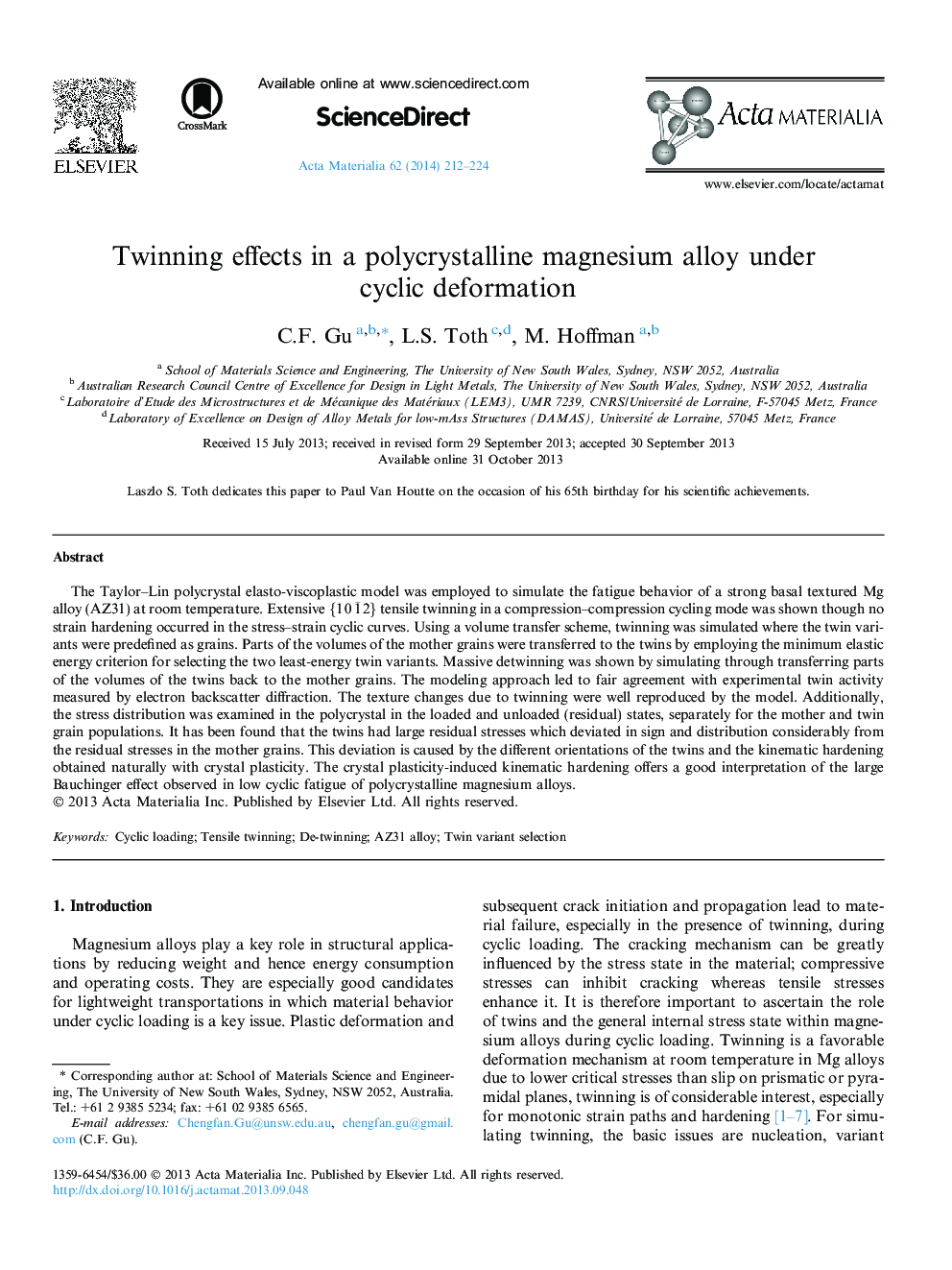| Article ID | Journal | Published Year | Pages | File Type |
|---|---|---|---|---|
| 1445976 | Acta Materialia | 2014 | 13 Pages |
The Taylor–Lin polycrystal elasto-viscoplastic model was employed to simulate the fatigue behavior of a strong basal textured Mg alloy (AZ31) at room temperature. Extensive {101¯2} tensile twinning in a compression–compression cycling mode was shown though no strain hardening occurred in the stress–strain cyclic curves. Using a volume transfer scheme, twinning was simulated where the twin variants were predefined as grains. Parts of the volumes of the mother grains were transferred to the twins by employing the minimum elastic energy criterion for selecting the two least-energy twin variants. Massive detwinning was shown by simulating through transferring parts of the volumes of the twins back to the mother grains. The modeling approach led to fair agreement with experimental twin activity measured by electron backscatter diffraction. The texture changes due to twinning were well reproduced by the model. Additionally, the stress distribution was examined in the polycrystal in the loaded and unloaded (residual) states, separately for the mother and twin grain populations. It has been found that the twins had large residual stresses which deviated in sign and distribution considerably from the residual stresses in the mother grains. This deviation is caused by the different orientations of the twins and the kinematic hardening obtained naturally with crystal plasticity. The crystal plasticity-induced kinematic hardening offers a good interpretation of the large Bauchinger effect observed in low cyclic fatigue of polycrystalline magnesium alloys.
